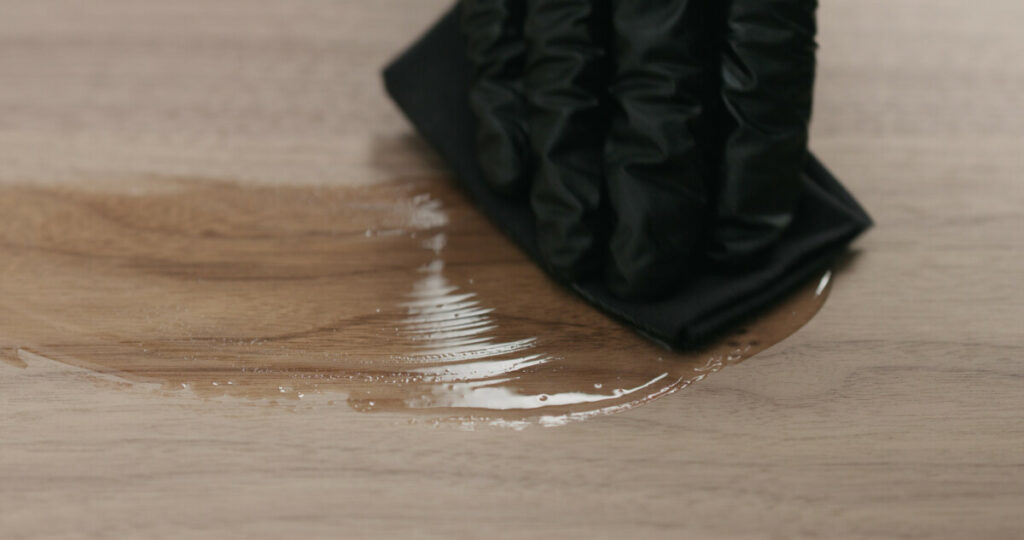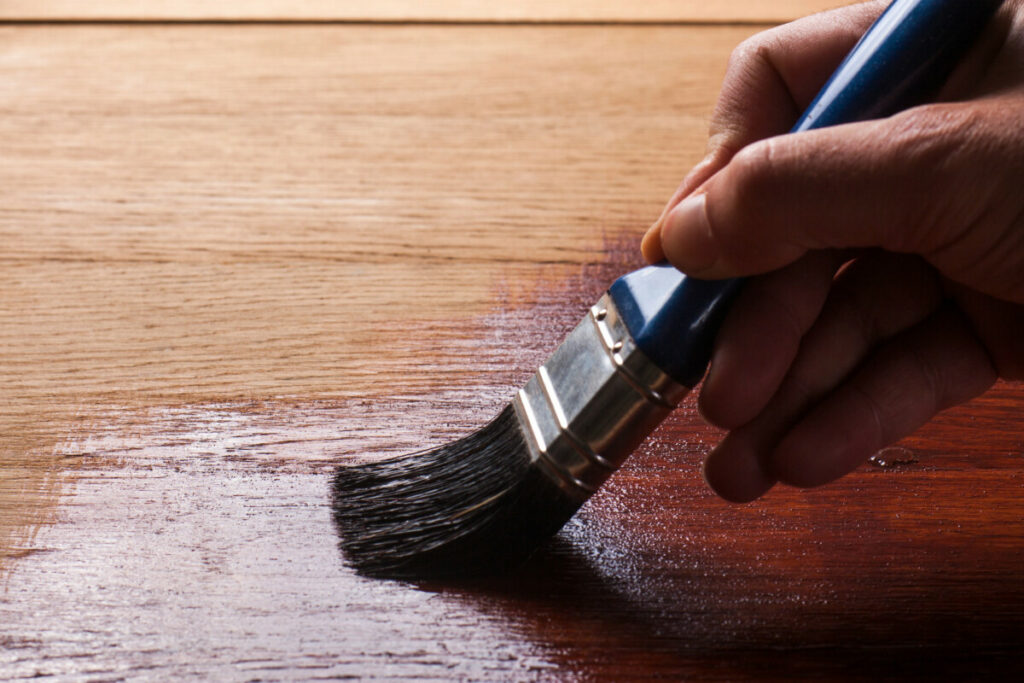You have finally finished that gorgeous deck or handmade furniture, and now the only thing that remains is the finish. Both tung oil and teak oil are great options, but understanding the difference between the two could make or break your project.
Tung oil is natural and comes from a tung tree while teak oil has a blend of different ingredients and chemicals. Teak oil dries faster than tung oil and can change the original color of the wood. Tung oil more closely preserves the original color of the wood.
Finishing products can be confusing because of the many different names used. To figure out which finish will best preserve your project, it is important to understand the pros and cons of each oil, which we have listed below.
Teak Oil
Many have the misconception that teak oil comes from the teak tree, but in fact, it is made from a blend of ingredients. Teak oil has linseed oil, tung oil, mineral spirits, and varnish. It also often contains petroleum to thin the mixture out. These are the most common ingredients, but really teak oil can contain almost any mixture.
More than an oil, teak oil is a varnish/oil combination. Unlike pure oil, you cannot leave excess teak oil on a project because it will dry wrinkled, and sticky. However, there are many projects where teak oil is appropriate when applied properly.
Teak oil is most often marketed for the use on the exterior and interior of boats, and for outdoor furniture.
Here are some pros and cons of teak oil that will help you decide if it is right for the job.
Pros
- Teak oil is great for outdoor projects because it provides UV protection so that the color of the wood doesn’t get bleached and fade.
- Teak oil is durable and won’t chip or crack when applied properly.
- Teak oil works well for dense woods like hickory, pine, spruce, and oak.
- Teak oil can be used for indoor or outdoor projects.
- Teak oil can be easily brushed on or wiped on with a rag.
- Teak oil dries quickly in about 2 to 4 hours.
Cons
- Teak oil can discolor wood. With age, the wood could become very dark. If in wet conditions, mold and mildew might cause the oils in the finish to turn gray or black.
- The hard finish of dry teak oil smoothes out the wood grain and makes it impossible to glue anything onto it because there is nothing for it to grip onto.
- Teak oil looks nice when you first apply it, but after being in outdoor or wet conditions, it doesn’t always maintain the same look.
Tung Oil

Tung oil has a long history as it has been used for thousands of years and is also known as China wood oil. It was used in China to preserve wooden ships because of its water-resistant qualities. The oil is made from the nuts of a tung tree, so it is 100% natural.
Pure tung oil dries to a honey color, but there are other options like dark tung oil that give the oil a darker and richer look once dry. This is a buildable varnish so in between drying, more coats can be applied to create better protection and waterproofing.
Tung oil is commonly used for wood floors, cabinets, decks, siding, furniture, and craft projects. It is also great for butcher blocks, cutting boards, wooden bowls, and utensils.
Here are some pros and cons that show the strengths and weaknesses of tung oil.
Pros
- Tung oil is water-resistant and this keeps wood preserved and mold-free.
- Because it is natural, tung oil is food safe and non-toxic so it is great for kitchen projects.
- Tung oil flexes with wood rather than cracking. Wood that expands will be strengthened by tung oil and won’t crack.
- Tung oil is easy to apply.
- Tung oil preserves the original color of the wood and gives a beautiful matte finish.
- Tung oil can be used indoors or outdoors.
Cons
- Tung oil does take a long time to dry. One coat applied can take 2-3 days to dry and harden.
- Tung oil does not store well. If it is exposed to heat and light it can become thick and pasty. You will not be able to use it after this.
- Pure tung oil does not penetrate wood well. Tung oil products that contain turpentine, however, do this much better.
Best Uses

Teak oil is most commonly used for outdoor furniture or wooden elements on boats and yachts. It is known to have UV properties, but this depends on the manufacturer and the number of coats applied. There is some debate about whether this is actually true.
Tung oil can be used on a variety of surfaces. It is often used on wood furniture, boat decks, flooring, or anything involving unfinished or weathered wood. It can also be used on non-wood surfaces like concrete floors, countertops, stone, brick, and more.
Both teak oil and tung oil cost about the same amount of money. Each costs about $20 for 16 ounces at your local hardware store.
Be careful about manufacturer mislabeling. Oftentimes you will see mixtures of oil and varnish (like teak oil) being labeled and sold as Antique oil, Maloof oil, tung oil, teak oil, or Danish oil. These are all likely very similar products. Beware of any product called “pure teak oil” because there is no such thing! Pure oil varnishes (like tung oil) might be called Wipe-On Poly, Seal-a-Cell, ProFind, salad bowl finish, tung oil, or teak oil. Make sure that you have is straight so you can walk away from the store with the right product!
While either teak oil or tung oil could probably work for your project, picking the right one could greatly impact the durability, look, and preservation of your wood item. Making the right choice could save you loads of money and time down the road, and knowing your options will make your next trip to the hardware store so much easier!

